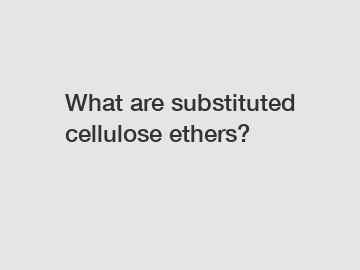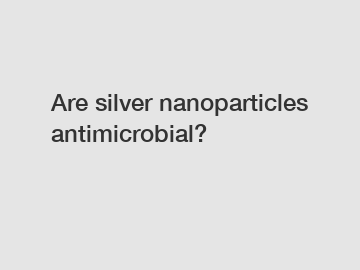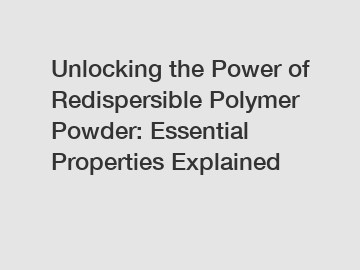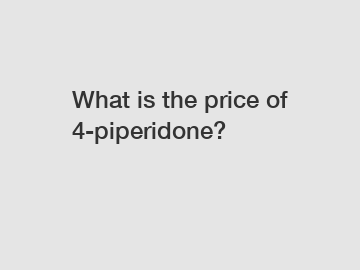What are substituted cellulose ethers?
Substituted cellulose ethers are a group of versatile and valuable chemical compounds that have a wide range of applications in various industries. They are derived from cellulose, a natural polymer found in plant cell walls. Cellulose ethers are modified to create substituted cellulose ethers by introducing various functional groups to the cellulose backbone, which enhances their properties and makes them more suitable for specific applications.
One of the most common types of substituted cellulose ethers is methyl cellulose, which is widely used in the construction industry as a water-soluble adhesive. Methyl cellulose is also used as a thickening agent in food products, cosmetics, and pharmaceuticals due to its ability to form gels and increase viscosity. Another popular type of substituted cellulose ether is hydroxypropyl cellulose, which is used in the pharmaceutical industry as a binder in tablet formulations and as a thickener in eye drops and ointments.
Substituted cellulose ethers are highly versatile and can be tailored to meet the specific needs of different industries. They can be modified to have different solubilities, viscosities, and gelation properties, making them suitable for a wide range of applications. In addition to their physical properties, substituted cellulose ethers are also biodegradable and non-toxic, making them environmentally friendly alternatives to synthetic polymers.

One of the key advantages of substituted cellulose ethers is their ability to form stable gels and films. This property is particularly useful in the food industry, where substituted cellulose ethers are used as thickening agents, stabilizers, and emulsifiers in a variety of products, including dairy products, sauces, and baked goods. The ability of substituted cellulose ethers to form gels also makes them ideal for use in pharmaceuticals, where they are used to create controlled-release drug formulations and to improve the stability of liquid dosage forms.
In the construction industry, substituted cellulose ethers are used as additives in cement and mortar formulations to improve workability, water retention, and adhesion. Substituted cellulose ethers act as rheology modifiers, enhancing the flow properties of the mixtures and improving their performance. In addition, substituted cellulose ethers can also act as water reducers, reducing the amount of water required in cement and mortar formulations without compromising their strength or durability.
Explore more:What are the different types of iron oxide pigments?
What is the average cost of biodegradable?
What is the difference between bulk and specialty chemicals?
How thick should my underlayment be?
Xylazine HCl: The Ultimate Solution for Anxiety?
Discover how hydroxypropyl methyl cellulose boosts cleaning power in detergents
The Uses of Nano Silver Unveiled!
Substituted cellulose ethers are also widely used in the cosmetics industry as thickeners, stabilizers, and emulsifiers in a variety of products, including lotions, creams, and hair care products. Substituted cellulose ethers help to improve the texture and consistency of cosmetic formulations, making them easier to apply and more aesthetically pleasing to consumers. In addition, substituted cellulose ethers can also act as film formers, creating a protective barrier on the skin or hair to enhance their moisture-retention properties.
The pharmaceutical industry also benefits from the unique properties of substituted cellulose ethers. These compounds are used as binders in tablet formulations to ensure that the active ingredients are evenly distributed and that the tablets maintain their shape and integrity. Substituted cellulose ethers are also used as thickening agents in liquid dosage forms, such as suspensions and syrups, to improve their stability and palatability.
Overall, substituted cellulose ethers are a versatile group of compounds that play a crucial role in a wide range of industries. Their unique properties, including their ability to form stable gels and films, make them valuable additives in food, pharmaceutical, cosmetic, and construction products. With their biodegradable and non-toxic properties, substituted cellulose ethers are also environmentally friendly alternatives to synthetic polymers, making them an attractive choice for manufacturers looking to reduce their environmental impact.
In conclusion, substituted cellulose ethers are a valuable and versatile group of compounds that offer a wide range of benefits to various industries. From their use as thickeners and stabilizers in food and cosmetics to their role as binders and film formers in pharmaceuticals and construction, substituted cellulose ethers are essential additives that enhance the performance and functionality of a wide range of products. With their unique properties and environmentally friendly nature, substituted cellulose ethers are sure to remain a popular choice for manufacturers looking to create innovative and sustainable products in the future.
Want more information on HPMC supplier, construction HPMC, HPMC for gypsum mortar? Feel free to contact us.
Explore more:What is the purpose of HPMC?
Why are compostable bags not allowed?
Do PC players have an advantage in SF6?
Hydrophobic powders: Are they Eco-Friendly Alternatives?
What is 2 Bromo 4 '- Methylpropiophenone used for?
Revolutionizing Home Improvement: Latex Paint Removal?
What is the CAS number of 9032 42 2?










